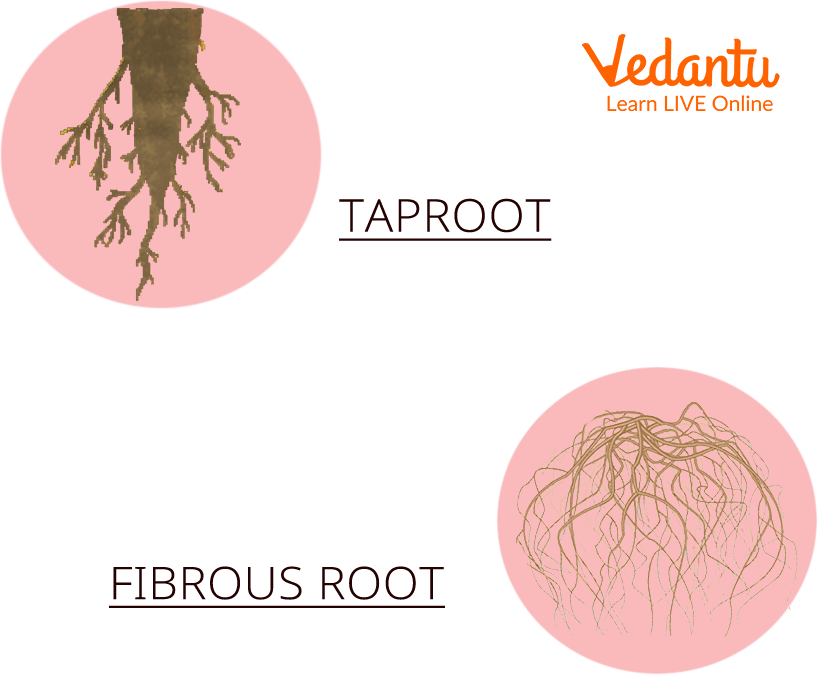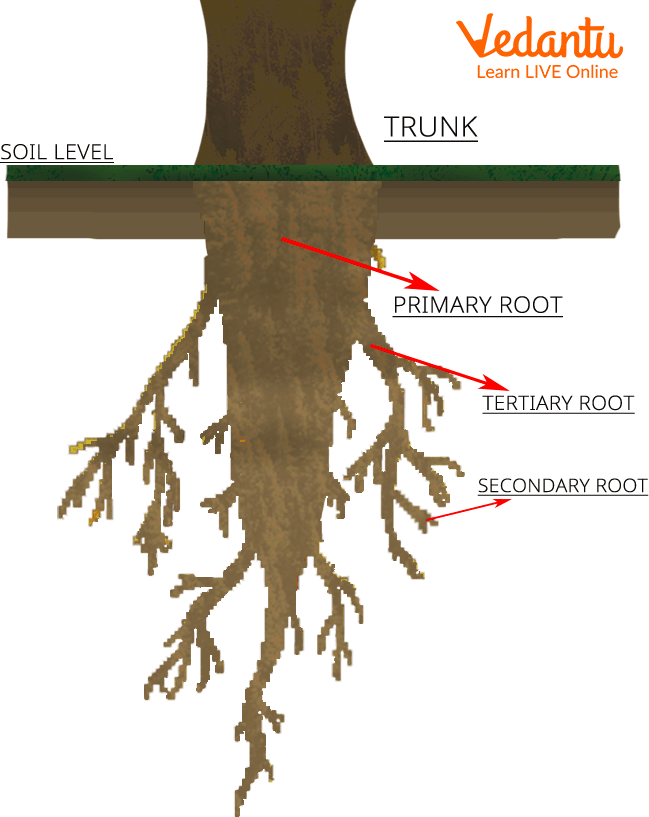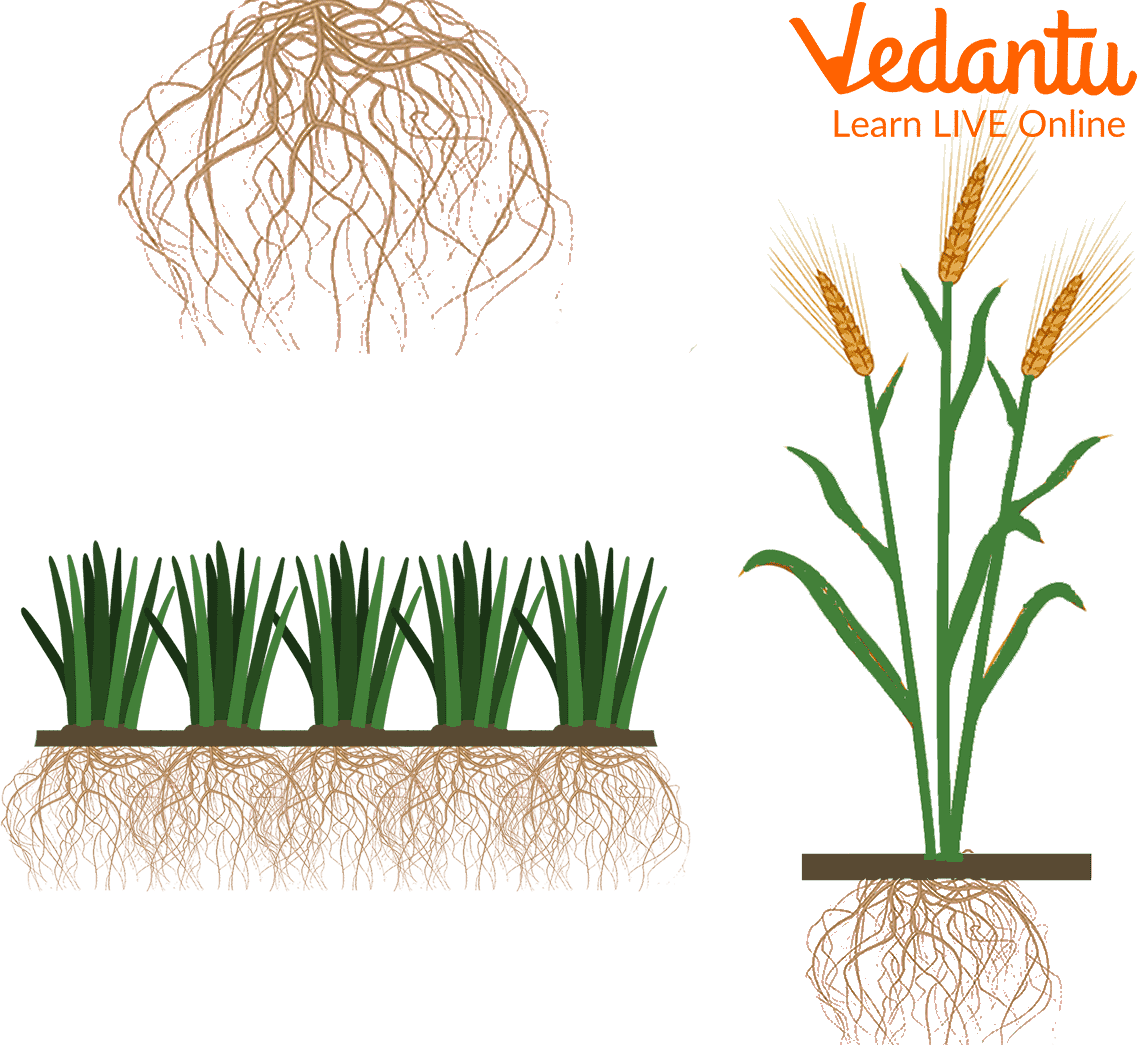




Key Differences Between Tap Roots and Fibrous Roots
A root is a part of a plant that is generally covered up underground. Roots have a few purposes. They hold the plant in the ground and keep it upstanding. The intake of food and water from the soil. They additionally store food for the plant.
A couple of plants can develop roots over the ground. Corn, for example, may develop roots out of its lower stem called aerial roots, they help to set up the plant.
There are mainly two kinds of roots: Taproots and fibrous roots.

Taproot and Fibrous Root
A taproot is a single branch, long thick, and pointed towards the ground whereas a fibrous root is scattered inside the ground with many thin branches.
Let’s see them in detail.
What are Taproot and Fibrous Roots?
Taproot
It is the fundamental root of a primary root system, which grows vertically downwards. Most plants like dandelions, reddish, and grass, produce taproots, and some, consumable roots of carrots and beets, are particular for food storage.
Upon germination, the first structure to rise out of most seeds is the root from the undeveloped radicle. This primary root is a taproot. In plants in which the taproot persists, smaller sidelong roots (secondary roots) commonly emerge from the taproot and may in turn create significantly smaller parallel roots (tertiary roots).
This effectively expands the surface area for water and mineral absorption. In different plants, the underlying taproot is immediately changed into a fibrous, or diffuse, system, in which the initial secondary roots soon equal or exceed the primary root in size and there is no well-defined single taproot. Examples of taproot are beetroot, carrot, onion, reddish, and many more.

Taproot
Characteristics of Taproot
It is the primary root that emerges from the radicle of the seeds.
The taproot gives rise to secondary parallel roots which further structure tertiary horizontal roots.
It is straight and thick in shape and normally tightens at the base.
Fibrous Root
A fibrous root is the complete opposite of a taproot system. It is normally formed by thin, moderately branching roots developing from the stem. A fibrous root system is common in monocotyledonous plants and greeneries. The fibrous root system looks like a mat made from roots when the tree has reached complete development.
Most trees begin life with a taproot, but after following one to a few years change to a wide-spreading fibrous root system with fundamentally even surface roots and a few upward, deep anchoring roots.
A typical mature tree 30-50 m tall has a root system that broadens horizontally in all directions as far as the tree is tall or more, but well more than 95% of the roots are in the top 50 cm depth of soil. Fibrous roots genuinely grow near the outer layer of the ground. Leaves with parallel venation have fibrous roots. Examples of fibrous root systems include coconut palm, banana, wheat, rice, and grasses.

Fibrous Root
Characteristics of Fibrous Root
Fibrous roots genuinely grow near the outer layer of the ground.
Leaves with parallel venation have fibrous roots.
Fibrous roots help in battling soil erosion as it is secured to the top layer of soil.
The thin roots have a similar diameter.

Fibrous Root
Difference Between Tap Root and Fibrous Root
Summary
The following points summarise the contents of this chapter:
Taproot penetrates deep into the soil, while a fibrous root is shallow and doesn't penetrate as deeply.
A taproot is the differentiated essential root of the plant, while the fibrous root isn't the differentiated primary root of the plant.
The fibrous root generates from the stem; this isn't the case for the taproot.
A taproot can sometimes act as a storage organ for food, while fibrous roots can't store food.
FAQs on Tap Root and Fibrous Root Explained with Examples
1. What is the main difference between a tap root and a fibrous root system?
The main difference lies in their structure. A tap root system has a single, thick, main root called the primary root that grows straight down, with smaller lateral roots branching off it. In contrast, a fibrous root system consists of a dense cluster of many thin, branching roots that originate from the base of the stem, with no single main root.
2. What are some common examples of plants with a tap root system?
Plants with a tap root system are common among dicots. Many of these are familiar vegetables where the root itself is the edible part. Examples include:
- Carrot
- Radish
- Beetroot
- Turnip
- Mustard Plant
- Mango Tree
3. Which plants typically have a fibrous root system?
Fibrous root systems are characteristic of monocotyledonous plants. These roots are excellent for anchoring the plant and absorbing water from the upper layers of the soil. Common examples include:
- Grass
- Wheat
- Rice
- Maize (Corn)
- Onion
- Coconut Tree
4. What are the primary functions and advantages of a tap root system?
A tap root system provides two main advantages for a plant. Firstly, its deep-growing primary root provides strong anchorage, making the plant stable against wind and soil movement. Secondly, it can reach water sources located deep within the soil, which is crucial during dry periods. Many tap roots are also modified to store food, like in carrots and radishes.
5. What are the key advantages of a fibrous root system for a plant?
The primary advantage of a fibrous root system is its ability to efficiently absorb water and minerals from the surface layer of the soil due to its large surface area. This dense network of roots is also highly effective at binding soil particles together, which plays a crucial role in preventing soil erosion.
6. How can you identify a plant's root type just by looking at its leaves?
You can often predict a plant's root system by observing its leaf venation. Plants with leaves that have reticulate venation (a net-like pattern of veins) typically have a tap root system. Conversely, plants with leaves that show parallel venation (veins running parallel to each other) usually have a fibrous root system.
7. Why are tap roots often modified for food storage, while fibrous roots are not?
The structure of a tap root, with its thick, central primary root, makes it an ideal organ for storing excess food like starch and sugars. This primary root can swell significantly to become a storage organ (e.g., a carrot). Fibrous roots, being thin and thread-like, lack this central storage capacity. Their structure is optimized for absorption across a wide area rather than for bulk storage.
8. In which environment would a plant with fibrous roots have an advantage over one with tap roots?
A plant with a fibrous root system would have a distinct advantage in an environment that receives frequent but light rainfall. Its dense, shallow network of roots can quickly absorb moisture from the top layer of the soil before it evaporates. In contrast, a plant with a deep tap root would be less efficient at capturing this surface water and would be better adapted to environments where water is located deeper underground.









